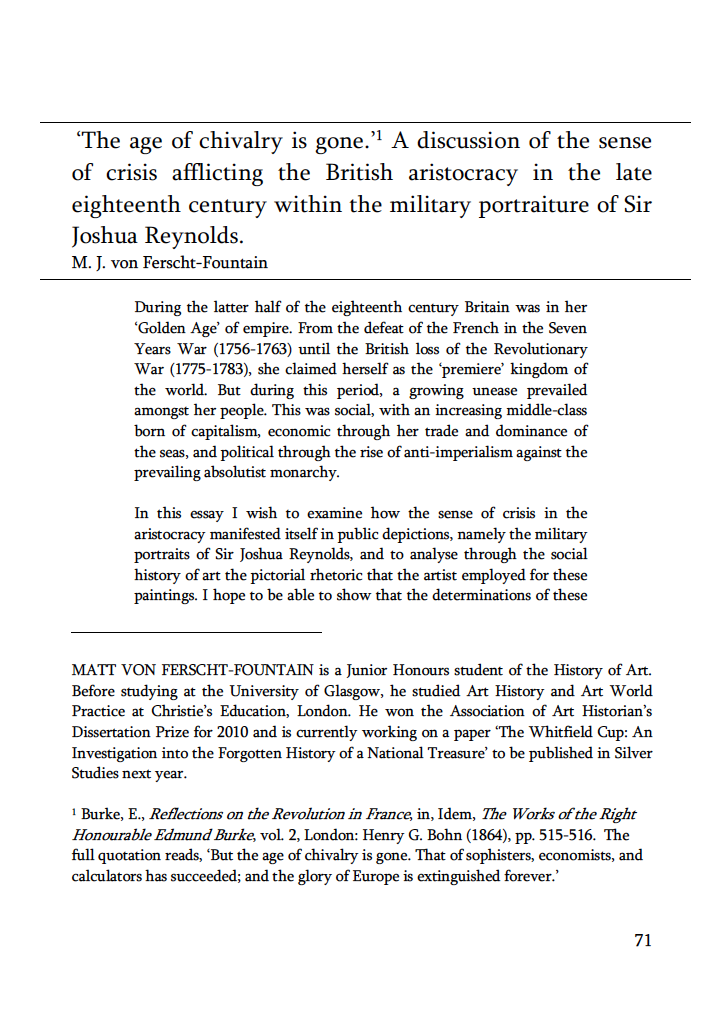‘The age of chivalry is gone.’
A discussion of the sense of crisis afflicting the British aristocracy in the late eighteenth century within the military portraiture of Sir Joshua Reynolds
DOI:
https://doi.org/10.36399/GroundingsUG.3.258Keywords:
Sir Joshua Reynolds, Eighteenth Century, Anti-imperialism, Class, Aristocracy, Pictorial Rhetoric, Heroism, VirtueAbstract
During the latter half of the eighteenth century Britain was in her ‘Golden Age’ of empire. From the defeat of the French in the Seven Years War (1756-1763) until the British loss of the Revolutionary War (1775-1783), she claimed herself as the ‘premiere’ kingdom of the world. But during this period, a growing unease prevailed amongst her people. This was social, with an increasing middle-class born of capitalism, economic through her trade and dominance of the seas, and political through the rise of anti-imperialism against the prevailing absolutist monarchy.
In this essay I wish to examine how the sense of crisis in the aristocracy manifested itself in public depictions, namely the military portraits of Sir Joshua Reynolds, and to analyse through the social history of art the pictorial rhetoric that the artist employed for these paintings. I hope to be able to show that the determinations of these aristocratic patrons in asserting ‘heroism’ and ‘civic virtue’ through their portrayals unconsciously exposed their self-conscious condition. Their endeavours in creating a modern, patrician appeal reflected the fractured social and political circumstances of the period into which they desperately attempted to adjust, and maintain power.

Downloads
Published
Issue
Section
License
Copyright (c) 2010 M. J. von Ferscht-Fountain

This work is licensed under a Creative Commons Attribution 4.0 International License.
The CC BY 4.0 license is a Creative Commons license. This is a non-copyleft free license that is good for art and entertainment works, and educational works. It is compatible with all versions of the GNU GPL; however, like all CC licenses, it should not be used on software. People are free to: Share — copy and redistribute the material in any medium or format; Adapt — remix, transform, and build upon the material for any purpose, even commercially. The licensor cannot revoke these freedoms as long as you follow the license terms. But they must conform to the following terms: Attribution — You must give appropriate credit, provide a link to the license, and indicate if changes were made. You may do so in any reasonable manner, but not in any way that suggests the licensor endorses you or your use. No additional restrictions — You may not apply legal terms or technological measures that legally restrict others from doing anything the license permits.
Please check individual article PDF copies to see if any additional restrictions apply.







